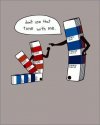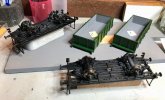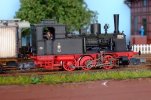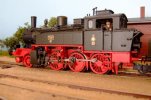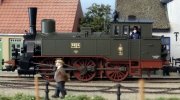Thanks Tim; yes, that's a very different colour isn't it, much more like something I'd call olive, or 'olive-infused', if that doesn't sound too much like a salad... And no need to apologise for the text layout, the content is entirely clear! I have to say though that I think that's more olive and less green than RAL 6009. Could that be ascribed to differences between the KWStE and KPEV?
Between these photos and
@Osgood 's very good paint-matching site linked upthread (which I've been looking at further) I'm still unsure as to whether what I've got is too far away from the RAL6009 ball-park or not.
Here's another photo, an attempt to have it appear on screen as similarly as possible to how it appears in real life. This was taken in natural, but not in bright, direct daylight. I then adjusted the colour of the photo, with one of the wagons next to the screen for comparison and what I'm seeing on the screen now is very close to what I'm seeing in real life and, I'm sure you'll agree, very different to my previously posted photos of the bodies, which were taken under bright artificial lighting:
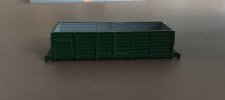
What's interesting is that moving the model into bright, directional daylight changes the appearance of the paintwork in terms of illumination (I'm trying to choose my words carefully there, meaning that it changes light intensity only) but it doesn't change the colour in terms of hue, saturation, or warmth (words leared from editing photos and hopefully being used correctly here).
Taking pictures on my phone and viewing them onscreen however, certainly does change all those things, unless I compensate for them. I still haven't got it spot on - the wagon has a
very slightly more olive (= yellow = warm?) tint, where this photo is ever so slightly more towards the blue / cold end, but this is pretty close.
I edited this post, because I'd originally replied saying I was off to strip the wagon bodies a second time and have another go at matching, but looking at them made me realise yet again what a huge difference there is between the real life colour and the photos I'd so far posted. It's very odd sometimes, the way things seem right one moment, and wrong the next..


